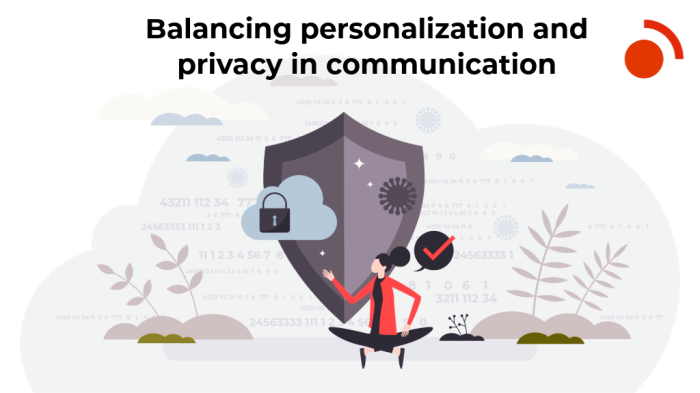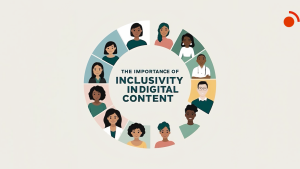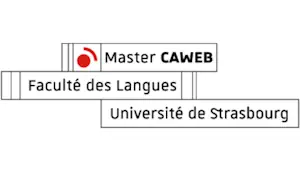Balancing Personalization and Privacy in Customer Communication

In the digital age, customers expect tailored experiences that resonate with their preferences, yet they are increasingly wary of how their data is used. For businesses, striking the right balance between personalization and privacy in customer communication is a critical challenge. Overstepping boundaries can erode trust, while underutilizing data can lead to generic, ineffective interactions. This blog post explores the importance of harmonizing personalization and privacy, offering actionable strategies, real-world examples, and insights into future trends. For students and professionals in the Master CAWEB program at the University of Strasbourg, mastering this balance is essential, as it intersects with web development, multilingual communication, and user experience (UX) design—core pillars of the program.
Why Personalization and Privacy Matter
Personalization involves using customer data, such as browsing history, purchase patterns, or demographic information, to deliver tailored content, recommendations, or services. For example, an e-commerce website might suggest products based on a user’s previous searches. Privacy, on the other hand, ensures that this data is collected, stored, and used ethically, respecting user consent and legal regulations like the General Data Protection Regulation (GDPR).
The stakes are high: a 2023 survey by PwC found that 86% of consumers are more likely to trust companies that prioritize data privacy, while 71% expect personalized experiences. For Master CAWEB students, understanding this duality is crucial, as it requires integrating data-driven web technologies with ethical communication practices to create user-centric digital experiences.
Benefits of Balancing Personalization and Privacy
Enhanced Customer Trust
Transparent data practices build trust. When businesses communicate how data is used and offer opt-in choices, customers feel respected, fostering loyalty.
Improved Engagement
Personalized communication, when done ethically, boosts engagement. A 2024 McKinsey report noted that companies using responsible personalization saw a 10-15% increase in customer retention.
Regulatory Compliance
Adhering to privacy laws like GDPR or the California Consumer Privacy Act (CCPA) protects businesses from fines and reputational damage while ensuring ethical data use.
Competitive Advantage
Businesses that balance personalization and privacy stand out in crowded markets, appealing to privacy-conscious consumers while delivering relevant experiences.
Strategies for Balancing Personalization and Privacy
To achieve this balance, businesses must adopt strategic approaches that prioritize both user experience and data ethics. Below are key strategies:
1. Transparent Data Collection
Inform customers about what data is collected and how it will be used. Use plain language in privacy policies and provide opt-in consent forms. For example, a retail website might display a pop-up explaining that cookies track browsing for personalized recommendations, with an option to customize settings.
2. Minimize Data Usage
Collect only the data necessary for personalization. For instance, a travel platform doesn’t need a user’s full address to recommend destinations—search history and preferences suffice.
3. Leverage Anonymized Data
Use anonymized or aggregated data to deliver personalization without compromising individual privacy. Machine learning models can analyze trends across user groups to offer relevant suggestions.
4. Implement Robust Security
Protect customer data with encryption, secure APIs, and regular audits. A breach can undermine trust, as seen in the 2018 Facebook-Cambridge Analytica scandal, which impacted 87 million users.
5. Offer User Control
Empower users to manage their data. Provide dashboards where customers can view, edit, or delete their information. This aligns with GDPR’s “right to be forgotten” and enhances trust.
6. Use Contextual Personalization
Personalize based on real-time context rather than extensive data. For example, a chatbot can suggest products based on a user’s current session without relying on long-term data storage.
7. Multilingual Privacy Communication
For global businesses, translate privacy policies and consent forms into multiple languages, aligning with the Master CAWEB program’s focus on multilingual communication. This ensures accessibility for diverse audiences.
Real-World Examples of Success
Spotify
Spotify’s “Wrapped” campaign uses listening data to create personalized year-end summaries, but it emphasizes user control with clear opt-out options. This transparency has boosted engagement, with 60 million users sharing their Wrapped results in 2024.
Zalando
The European fashion retailer uses anonymized data to recommend clothing sizes and styles, minimizing personal data use. Its GDPR-compliant approach has earned it a reputation for trustworthiness.
Duolingo
Duolingo personalizes language lessons based on user progress while maintaining strict privacy standards. Its multilingual interface caters to global users, resonating with CAWEB’s emphasis on inclusive communication.
Challenges and Solutions
Challenge: Over-Personalization
Excessive personalization can feel intrusive, as when ads follow users across platforms.
Solution: Limit data tracking to relevant interactions and offer opt-out options for targeted ads.
Challenge: Complex Privacy Regulations
Navigating GDPR, CCPA, and other laws can be daunting for global businesses.
Solution: Partner with legal experts and use compliance tools to automate adherence, ensuring seamless operations.
Challenge: Technical Limitations
Small businesses may lack resources for advanced security or personalization.
Solution: Leverage affordable platforms like HubSpot or Mailchimp, which offer built-in privacy and personalization features.
Future Trends in Personalization and Privacy
AI-Driven Ethical Personalization
Advances in AI will enable hyper-personalization with minimal data, using predictive models to anticipate needs while respecting privacy.
Zero-Party Data
Businesses will increasingly rely on zero-party data—information customers voluntarily share, like preferences in surveys—reducing reliance on invasive tracking.
Privacy-by-Design Frameworks
Web developers will embed privacy into platforms from the ground up, aligning with CAWEB’s focus on user-centric design.
Voice and AR Integration
Voice assistants and augmented reality (AR) will offer new personalization avenues, but they’ll require transparent data practices to maintain trust.
Why This Matters for Master CAWEB Students
For Master CAWEB students, balancing personalization and privacy is a multidisciplinary challenge. Web development skills are needed to build secure, data-driven platforms; UX design ensures intuitive interfaces for consent and control; and multilingual communication makes privacy policies accessible globally. By mastering these areas, students can create innovative solutions for businesses, enhancing their employability in digital marketing, e-commerce, and web development.
Conclusion
Balancing personalization and privacy in customer communication is not just a technical challenge, it’s a strategic imperative. By adopting transparent practices, minimizing data use, and empowering users, businesses can deliver tailored experiences while building trust. For Master CAWEB students, this balance represents an opportunity to apply web development, UX, and multilingual skills to real-world problems. Ready to explore this dynamic field? Dive into the Master CAWEB program at the University of Strasbourg, where innovation meets impact.
Written by Claude Heumel





